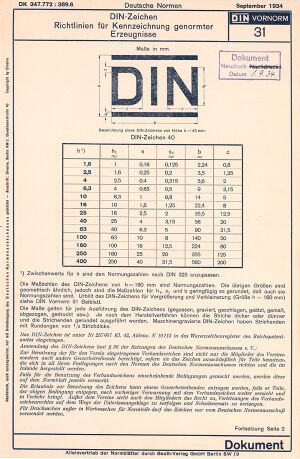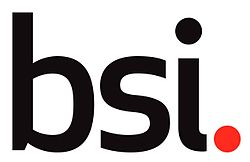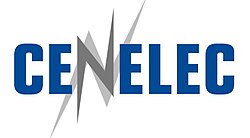Since the early 20th century, national and international standards organisations have existed to create technical and safety standards ensuring our equipment works as we expect, and works with other equipment. Above all, standards also keep us safe.
The history of standards goes back a long way. The Indus Valley civilisation used standards for weights and measures around 5000 years ago. Technical standards became increasingly important during the industrial revolution, to ensure products met the required specification, and machinery parts made by different manufacturers were compatible. One example of this was the British Standard Whitworth (BSW) standard, devised in 1841 - the world’s first national screw thread standard. Safety regulations and standards also developed during the 19th century, such as the revised building codes following the Ringtheater fire in Vienna (J.05).
It was in the 20th century, however, that standards began to be put into national and international frameworks. The first half of the 20th century saw the development of national standards authorities in many European countries, especially the more industrialised ones. The Engineering Standards Committee was founded in London in 1901, later extending its standardisation work and adopting the name British Standards Institution (BSI) in 1931. In Germany in 1879, Werner von Siemens and Heinrich von Stephan founded the first Elektrotechnischer Verein (Association of Electrical Engineers) in the world, which later becoming part of the Verband Deutscher Elektrotechniker (German Electrical Engineers Association, VDE). VDE presented its first Normalien-Buch (Book of Standards) in 1904, and in 1906 it helped found the International Electrotechnical Commission (IEC), which now sets over 10,000 electrical and electronic standards, used in 173 countries.
In 1917 the Normenausschuss der Deutschen Industrie (German Industrial Standards Committee) was established – later renamed the Deutscher Normenausschuß (German Standards Committee). Only a few weeks after being founded, it published the first DIN (Deutsche Industrie-Norm) standard, defining the dimensions of and materials for taper pins under the title DI-Norm 1.
This rapid development of standards organisations in the first decades of the 20th century helped improve safety and support national and international trade in many different areas of industry. Electrical systems, equipment and connectors were a particular focus, because of the rapid growth of the electricity infrastructure. At first, without agreed standards, each manufacturer produced its own – often patented – type of connector. Plugs and sockets were sold in pairs, to ensure compatibility. Successful products became de facto standards, subsequently formalised as official national and international standards. One of the earliest was the 1915 British Standard 73 for wall plugs and sockets.
A further British Standard was issued in 1934, BS 546, covering two- and three-pin plugs and sockets. The standard covered a range of connectors, rated at 2, 5, 15 and 30 amps. Adoption in the theatre industry was slow, but by the 1950s and 1960s, greater flexibility of lighting rigs was expected, so lights needed to be easily moved and replugged. The 15A round pin connector became widely adopted, with the 5A connector sometimes used in smaller venues. With some safety updates, the 15A connector remained the theatre lighting ‘standard’ in the UK until the late 20th century when it was gradually replaced by the 16A ceeform.
In Germany, the Schuko-system three pin plug dates from 1926. Schuko is an abbreviation of Schutzkontakt, which means ‘protective contact’. Two important safety features of the Schuko connector standard are the earth clips that make contact before the other pins, and the recessed sockets, ensuring live pins can’t be touched. The original design of a safe, earthed plug and socket was the idea of Albert Büttner. The plugs had earth clips rather than a (third) earth pin. Further developments resulted in a version that was patented in 1930 by the Siemens-Schuckerwerke in Berlin. This patent describes the plug and socket that is still in use, showing that standards can have long lives.
By the 1960s, the CEE (Commission internationale de réglementation en vue de l'approbation de l'équipement électrique - now part of the IEC) had introduced a standard for industrial power connectors: CEE 17. This standard gave rise to the ‘ceeform’ plugs and sockets that are widely used in industry, including in theatre and live events. The standard specifies a range of ratings for current, voltage and environmental protection (resistance to dust, water, and so on). The specification includes several safety features: colour-coding makes the different types easy to identify, while pin layouts are designed so it is impossible to connect plugs and sockets of different types, or to connect them incorrectly. The design of the shell ensures it is impossible to accidentally touch the live pins while connecting and disconnecting.
Electrical connectors are just one type of equipment where a common standard has made the life of theatre technicians easier and safer. Creating standards is overseen by national and international bodies, including since 1947 the International Organization for Standardization (ISO) that is global in its scope. The job of developing standards is done in conjunction with industry experts, and while it is not glamorous and seldom recognised, it is important work that industries benefit from greatly. The work is marked by Standardization Day (also known as Weltnormentag or World Standards Day), celebrated annually on October 14 in honour of the resolution, passed in London in 1946, to found an international organisation to simplify standardisation. We are all the safer for it.





